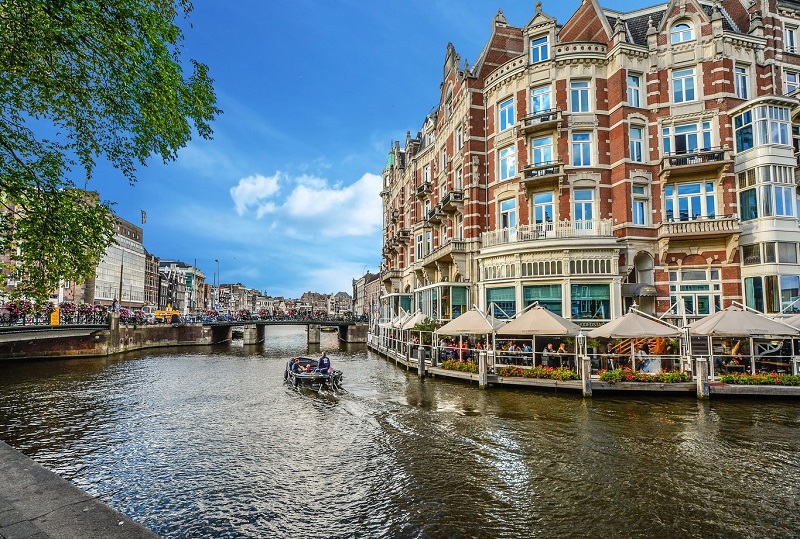Observing hundreds of kilometers of snowy forests flowing out the window, which frames remote cities from all over Russia, it is not surprising that travelers are fascinated by the Trans-Siberian. Embarking on this train journey from Moscow to Vladivostok or Beijing requires good planning and a sense of adventure and packing the right things can make the difference in a trip. Here is a practical guide to help you get started.
Plan ahead
First the essentials: to dispel all the romantic images associated with the Trans-Siberian, it is not possible to get on and off as you please. You will have to choose the route, secure the necessary visas and buy tickets for each leg of the route (once there or from your country of origin through an agency). The road from Moscow to Vladivostok requires only a Russian visa (apply at least a month before). Tourists of some nationalities will need a Mongolian visa to travel and if you leave or end your trip to Beijing, you will almost certainly need a Chinese visa.
Unless you are planning a non-stop trip, book your accommodation in any place where you stop along the way. In summer, the popular guesthouses on Lake Baikal could be in great demand, in winter some hotels close: in any case, planned in advance.
Finally, learn the Cyrillic alphabet and the different Russian time zones. Even if you don’t graduate in Russian conversation, the alphabet is essential for deciphering the train departure board. Tickets for Russian trains list your departure according to the Moscow time zone (even if you are five hours ahead in Ulan-Ude). Consider setting a couple of clocks on the home screen of your phone or tablet, which refer to the time zones you will cross.
Luggage that doesn’t keep your hands busy
If you can carry the equipment on your back, a backpack will leave your hands free to show tickets and passports. Duffels and backpacks are best to crush in the onboard luggage storage. If you have to opt for a suitcase with wheels, choose a thin and light type: the train corridors are narrow. There’s little room to maneuver aboard the train to dig into your suitcase, so organize essentials in a small, easy-to-reach backpack: include a toothbrush, wipes (you’ll need them), snacks, and travel documents.
Your uniform on the train
It is a good idea to pack a “train uniform”: light and comfortable clothes in which to sleep but not too sloppy to generate gasps in the restaurant car. Regardless of the season, the Trans-Siberian carriages are often kept very warm, sometimes suffocating. Loose cotton trousers and a t-shirt are ideal, along with a light sweater or sweatshirt. And don’t forget flip flops or slippers to wear on board. Trust us, there is nothing that will make you want to burn your socks as you set foot on the floor of a very popular bathroom in third class.
Be ready for every season
Outside the train, think about dressing in layers. In addition to a selection of T-shirts, jeans and underpants, bring a base layer of wool and thick socks: even in summer the evenings can get cold. Travelers who stop on Lake Baikal in the summer should not forget about insect repellent and hat with net for walks along the lake.
Be wary when choosing what to put on your feet. Comfortable and used trekking shoes will be useful for both walking around the city and for outdoor explorations. Resist the temptation to weigh down your suitcase with flashy shoes and your elegant clothes. Once out of Moscow the dress code is much more informal and not even backpackers in jeans will be able to enter most of the bars.
For a trip in the winter, add a wool sweater, a coat and / or a jacket, leggings to put under your jeans and padded pants (the perfect type for winter sports). The winter cold is perceived in a terrible way in the extremities, so do not forget a hat and quality gloves. Maybe buy ski gloves designed to protect your fingers down to -30°. Passionate photographers should consider buying ski gloves with separate merino wool interiors. Wearing only the interior gives you enough manual skills to hold the camera and protects your hands for the precious few seconds as you point the lens at a snow-dusted cathedral.
Food and beverages
The livelihood on board the Trans-Siberian is the samovar, a teapot with hot drinking water. As there is no place to keep food in the fridge, bring snacks that only need hot water to prepare: bowls of instant noodles, and soups and a casket of tea and coffee bags.
You will need to eat anything perishable in the early hours of the journey, before your cheese or yogurt starts to sweat from the hot air.
Bring a drinking vessel, ideally a reusable insulated mug with a suitable lid. You can borrow cups or buy them on board but they don’t have a lid, which means going back dancing the samba through the compartment of the train that winces while trying not to burn yourself.
Don’t load your food backpack all the way. There are many possibilities to refuel along the way, even if you are traveling from Moscow to Beijing in one journey. Before getting off, check the times (usually displayed on the carriage door) and ask your provodnitsa (employee in the carriage) for how long the train stops: seeing your train leaving is too high a price to pay for instant noodles.
Vendors crowd the station tracks with snacks (although there are fewer in the winter) and the shops inside the train station offer fresh food, ravioli and snacks suitable for the samovar. The usual rules for street food apply: follow the local customs (the queues for cooked food are a good sign), choose fruit that can be peeled and do not trust dairy products outside the fridge.
The snack carts on board can be comfortable (although they are very expensive in comparison) and when you buy train tickets you can add meals to the package, which will be brought in your carriage. The quality varies and you will have much more choice bringing cash for a couple of meals in the dining car.
App for travel and books
Travel apps can make life on board even more rewarding. Download them before leaving; there is no Wi-Fi on board. Google translator has an offline function, download only the necessary languages. This is extremely useful when you ask questions to the carriage attendants, order in the dining car or have a chat with other travelers. If the time zones send your brain to food, monitor them with an app like Time Zone Converter; add your main stops for immediate guidance. While some travelers carry a flashlight, especially useful in third class at night, others use the internal flashlight feature on the phone or an app like Flashlight.
Also download books on an e-reader or an app on your phone before traveling. Your good intention to read War and Peace could be dispelled by the passport checks at 3 in the morning with blurry eyes, so bring even your most secret literary passions: crime, erotic science fiction, there is no judgment on board a long distance train. If you prefer not to stare at the screen, consider exchanging books in the hostel while traveling to avoid carrying heavy paper books across the tundra.
Entertainment: How not to go crazy on the train
Do you feel the tension of the 15 hours to spend looking at birch forests? These light objects will make your trip more pleasant.
A sleeping kit. Even if you are not a light sleeper, bring caps and a mask to protect yourself from the rays of the oncoming trains and from the roommates who snore.
Caps. The rest of the passengers will be generous enough to share their passion for fast-paced Russian pop music. Good quality headphones can isolate you when the caps are not enough.
A knife and a spoon-fork. A multipurpose, possibly heat-resistant fork spoon will help you knock down soups, eat noodles and mix drinks from the samovar. A small knife is useful if you make multiple stops and plan many picnics.
An extra roll of toilet paper. You may not need it, but you will never regret having crammed it into a corner of your backpack.
An alcohol to share. Yes, the stories about sharing vodka with your roommates are true and bringing a bottle is an easy way to make friends. If you don’t drink alcohol, fruit tea bags are equally welcome.
A notebook. Even if you don’t like the quality of your scribbles, bring a notebook and a pen. It is an easy way to communicate with train staff and other travelers by drawing or writing down numbers. And while the kilometers of taiga follow each other with lakeside villages and turquoise houses that run out the window, your mind will bloom with thoughts that you will want to immortalize forever.
You may also like http://foodwithkidappeal.com/



